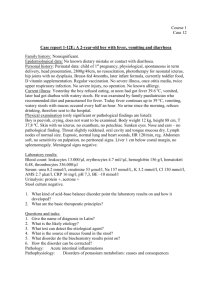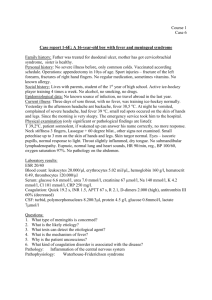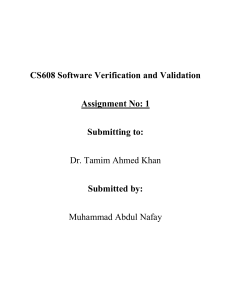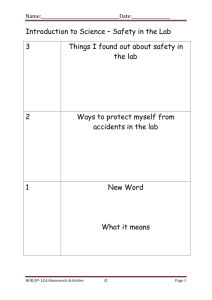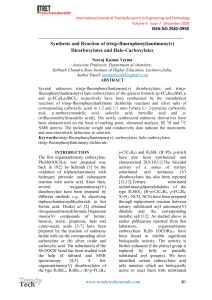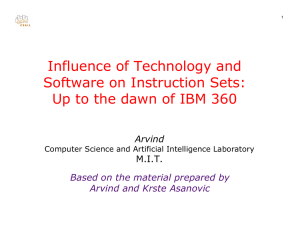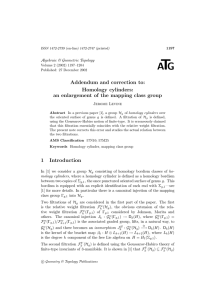Reverse transcription-polymerase chain reaction (RT-PCR)
advertisement
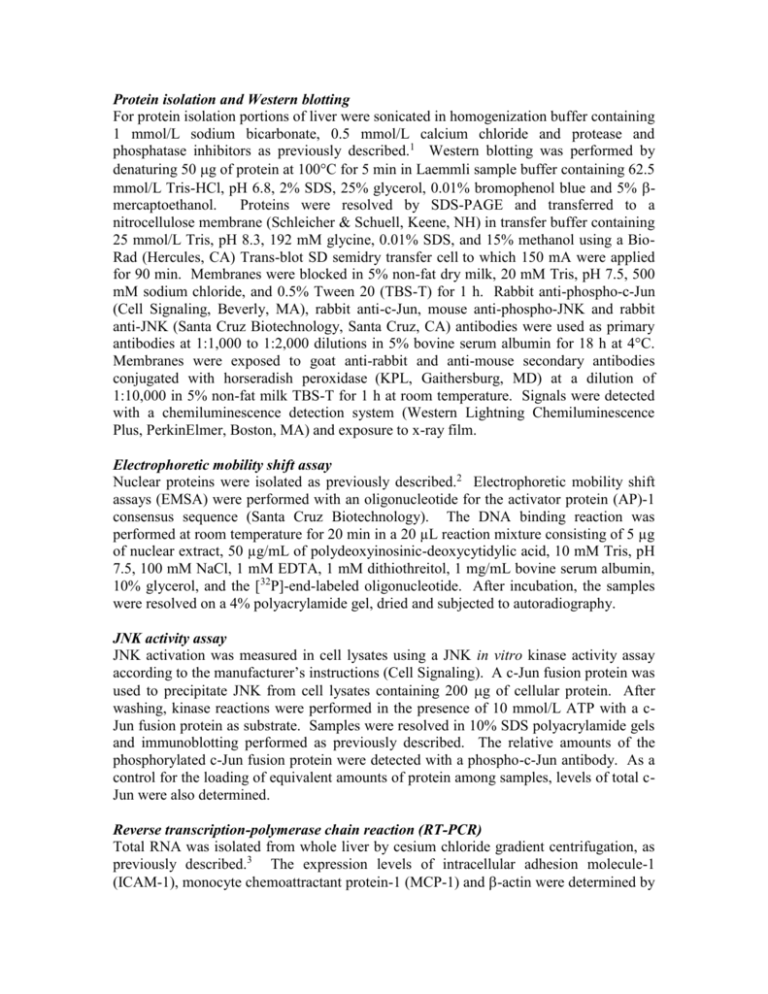
Protein isolation and Western blotting For protein isolation portions of liver were sonicated in homogenization buffer containing 1 mmol/L sodium bicarbonate, 0.5 mmol/L calcium chloride and protease and phosphatase inhibitors as previously described.1 Western blotting was performed by denaturing 50 g of protein at 100°C for 5 min in Laemmli sample buffer containing 62.5 mmol/L Tris-HCl, pH 6.8, 2% SDS, 25% glycerol, 0.01% bromophenol blue and 5% mercaptoethanol. Proteins were resolved by SDS-PAGE and transferred to a nitrocellulose membrane (Schleicher & Schuell, Keene, NH) in transfer buffer containing 25 mmol/L Tris, pH 8.3, 192 mM glycine, 0.01% SDS, and 15% methanol using a BioRad (Hercules, CA) Trans-blot SD semidry transfer cell to which 150 mA were applied for 90 min. Membranes were blocked in 5% non-fat dry milk, 20 mM Tris, pH 7.5, 500 mM sodium chloride, and 0.5% Tween 20 (TBS-T) for 1 h. Rabbit anti-phospho-c-Jun (Cell Signaling, Beverly, MA), rabbit anti-c-Jun, mouse anti-phospho-JNK and rabbit anti-JNK (Santa Cruz Biotechnology, Santa Cruz, CA) antibodies were used as primary antibodies at 1:1,000 to 1:2,000 dilutions in 5% bovine serum albumin for 18 h at 4°C. Membranes were exposed to goat anti-rabbit and anti-mouse secondary antibodies conjugated with horseradish peroxidase (KPL, Gaithersburg, MD) at a dilution of 1:10,000 in 5% non-fat milk TBS-T for 1 h at room temperature. Signals were detected with a chemiluminescence detection system (Western Lightning Chemiluminescence Plus, PerkinElmer, Boston, MA) and exposure to x-ray film. Electrophoretic mobility shift assay Nuclear proteins were isolated as previously described.2 Electrophoretic mobility shift assays (EMSA) were performed with an oligonucleotide for the activator protein (AP)-1 consensus sequence (Santa Cruz Biotechnology). The DNA binding reaction was performed at room temperature for 20 min in a 20 µL reaction mixture consisting of 5 µg of nuclear extract, 50 µg/mL of polydeoxyinosinic-deoxycytidylic acid, 10 mM Tris, pH 7.5, 100 mM NaCl, 1 mM EDTA, 1 mM dithiothreitol, 1 mg/mL bovine serum albumin, 10% glycerol, and the [32P]-end-labeled oligonucleotide. After incubation, the samples were resolved on a 4% polyacrylamide gel, dried and subjected to autoradiography. JNK activity assay JNK activation was measured in cell lysates using a JNK in vitro kinase activity assay according to the manufacturer’s instructions (Cell Signaling). A c-Jun fusion protein was used to precipitate JNK from cell lysates containing 200 g of cellular protein. After washing, kinase reactions were performed in the presence of 10 mmol/L ATP with a cJun fusion protein as substrate. Samples were resolved in 10% SDS polyacrylamide gels and immunoblotting performed as previously described. The relative amounts of the phosphorylated c-Jun fusion protein were detected with a phospho-c-Jun antibody. As a control for the loading of equivalent amounts of protein among samples, levels of total cJun were also determined. Reverse transcription-polymerase chain reaction (RT-PCR) Total RNA was isolated from whole liver by cesium chloride gradient centrifugation, as previously described.3 The expression levels of intracellular adhesion molecule-1 (ICAM-1), monocyte chemoattractant protein-1 (MCP-1) and -actin were determined by RT-PCR using the QIAGEN (Valencia, CA) OneStep RT-PCR kit according to the manufacturer’s instructions. Briefly 50 L reactions were carried out with a mixture of 400 mol/Lof each dNTP, 0.6mol/Lof the forward and reverse primers, 2 L of the QIAGEN OneStep enzyme mix and 1g of total RNA. The sequences of the primers used were: ICAM-1 (forward) 5′-GGA GCA AGA CTG TGA ACA CG-3′, (reverse) 5’GAG AAC CAC TGC TAG TCC AC-3′; MCP-1 (forward) 5′-ACT GAA GCC AGC TCT CTC TTC CTC-3′, (reverse) 5′-TTC CTT CTT GGG GTC AGC ACA GAC-3′; actin (forward) 5′-ATG GAT GAC GAT ATC GCT G-3′, (reverse) 5′-ATG AGG TAG TCT GTC AGG T-3′. The PCR products were subjected to 1.5% agarose gel electrophoresis with ethidium bromide, visualized under UV light and scanned images quantitated by densitometry. Transcripts of constitutively expressed -actin were used to normalize the levels of ICAM-1 and MCP-1 mRNA in each sample. References: 1. Schattenberg JM, Wang Y, Rigoli RM, Koop DR, Czaja MJ. CYP2E1 overexpression alters hepatocyte death from menadione and fatty acids by activation of ERK1/2 signaling. Hepatology 2004; 39:444-455. 2. Xu Y, Bradham C, Brenner DA, Czaja MJ. Hydrogen peroxide-induced liver cell necrosis is dependent on AP-1 activation. Am J Physiol 1997; 273:G795-G803. 3. Liu H, Lo CR, Jones BE, Pradhan Z, Srinivasan A, Valentino KL et al. Inhibition of cMyc expression sensitizes hepatocytes to tumor necrosis factor-induced apoptosis and necrosis. J Biol Chem 2000; 275:40155-40162.





